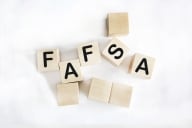You have /5 articles left.
Sign up for a free account or log in.
Intensive advising programs can result in significant savings for low-income students going to college, according to a new research paper, but many high schools lack the sort of resources the paper discusses.
The paper – co-authored by Benjamin Castleman, an assistant professor at the University of Virginia, and Joshua Goodman, an assistant professor at Harvard University – focuses on the outcomes of a Boston-based advising program called Bottom Line.
Bottom Line, which also has offices in Worcester, Mass., and New York, employs more than 50 counselors who work with low-income students to help them get into and graduate from college. The students must have a 2.5 grade point average and make less than 200 percent of federal poverty guidelines.
The organization begins working with students during the end of their junior year, providing them with assistance and a list of 20 or so area colleges that have demonstrated higher than average graduation rates for low-income and first-generation students. Bottom Line must also find the institution affordable, and the organization maintains a second list of colleges it discourages students from attending – mostly pricier private institutions.
"While Bottom Line did not appear to induce students to attend higher-quality institutions (as measured by six-year graduation rate)," the authors wrote, "it had a clear impact on the affordability of institutions that students attended."
Comparing the colleges where Bottom Line students ultimately enrolled with where students who just missed the programs requirements enrolled, the researchers found that the average net price for Bottom Line students was 35 percent lower.
As the paper mostly compared the choices made by students who all at least enrolled at a college, the researchers can’t say for certain whether more students go to college because of counseling. But advisors can dramatically alter where those students choose to go, affecting how much they pay and whether they go to a four-year or two-year institution. The effect was largest among Hispanic students and students who speak English as a second language, the authors wrote.
“This counseling clearly does change where students go to college,” Goodman, one of the authors, said. “Very clearly the data shows that counseling is successful at getting kids to attend these colleges that the organization sees as having good graduation rates and relatively low prices for students. Counseling changes where kids go to college.”
Bottom Line counselors meet with students one-on-one for an hour every two weeks to specifically discuss college – a luxury not many high school counselors have, Goodman admitted. At the average high school, there are about 450 students for every one counselor, according to the National Center for Education Statistics, and these students are a broad mix of ages, income brackets, and grades. The meetings are not entirely focused on applying to college.
Providing advising services comparable to an organization like Bottom Line would likely take more money and more staff members than what is available at many schools, Goodman said. There is one aspect of Bottom Line that counselors can adopt, however.
“Orient whatever small amount of time you have with each student to getting them to find options that are both inexpensive and where graduation rates are decent,” Goodman said. “If the only thing you can do is say ‘Hey, don’t go to this expensive college, go to this less expensive one that’s really just about as good,’ it still has a pretty powerful effect.”








